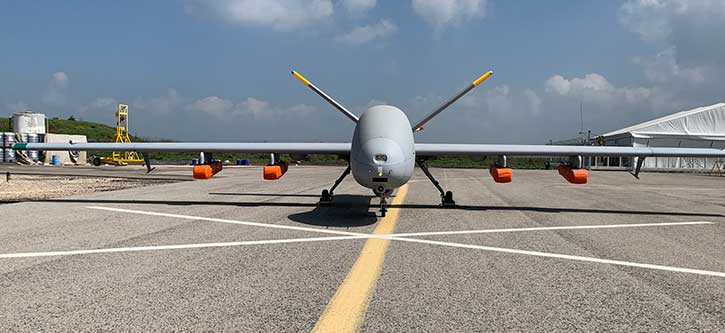Elbit Systems has recently delivered Unmanned Aerial Systems equipped for maritime search and rescue to an undisclosed customer in South-East Asia. In this configuration, the Hermes 900 is equipped with detection and identification systems, precision dispatch capability, and up to four inflatable life rafts, each can rescue six survivors. This configuration enables the drone to perform long-range maritime Search and Rescue (SaR) missions, and deliver life-saving assistance quickly upon detection of survivors.
Drones are complementing traditional manned SaR operations as they offer long endurance and long-range operations since adverse weather conditions and limited mission endurance of the crew often degrade the SaR capabilities of manned aircraft. With mission endurance exceeding 24 hours, drones can operate in extended missions and in adverse weather conditions in both day and night. Equipped with the new SaR capability Hermes 900 UAS can increase the number of SaR missions that can be safely executed and improve the safety and effectiveness of maritime SaR response.
With a wingspan of 15 meters, the 1.2 Ton Hermes 900 Maritime Patrol is a long-range maritime surveillance system tailored for littoral and blue water operations. On typical SaR missions, Hermes 900 Maritime Patrol can carry up to four, six-person life-rafts that are carried by underwing hardpoints. Using an onboard maritime search radar the UAS can detect the vessel in distress and assess survivor situation. Such drones also employ satellite communication, an automatic identification system receiver, and an Emergency Position-indicating Radio Beacon receiver.

Hermes 900 Maritime Patrol can carry up to four, six-person life-rafts that are integrated on its wings.
Upon detection, the UAS’ Electro-Optic/Infra-Red (EO/IR) payload is deployed to provide visual identification, and a rapid calculation of the drop-point is performed, enabling the UAS to dispatch life rafts from a low-altitude of 600 ft. to a pinpointed location at a safe distance from the survivors. A gradual inflation process of the life-rafts is initiated after dispatch and is completed upon landing.
from Defense Update: https://ift.tt/3dmTJsn
via Defense News
No comments: